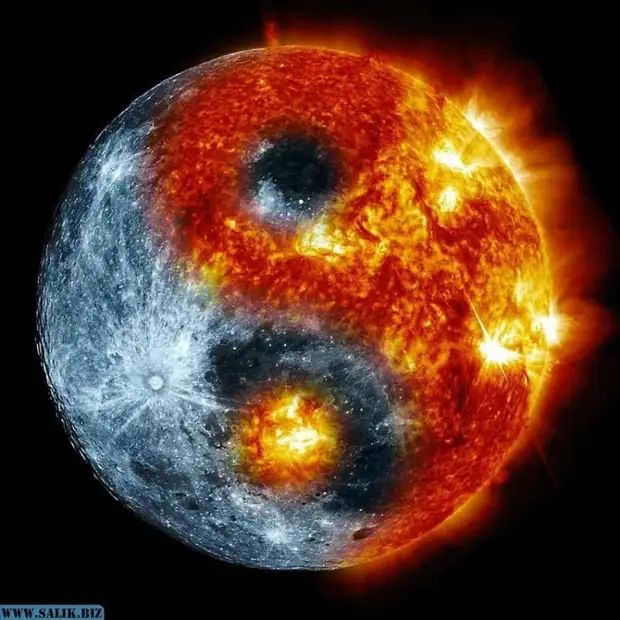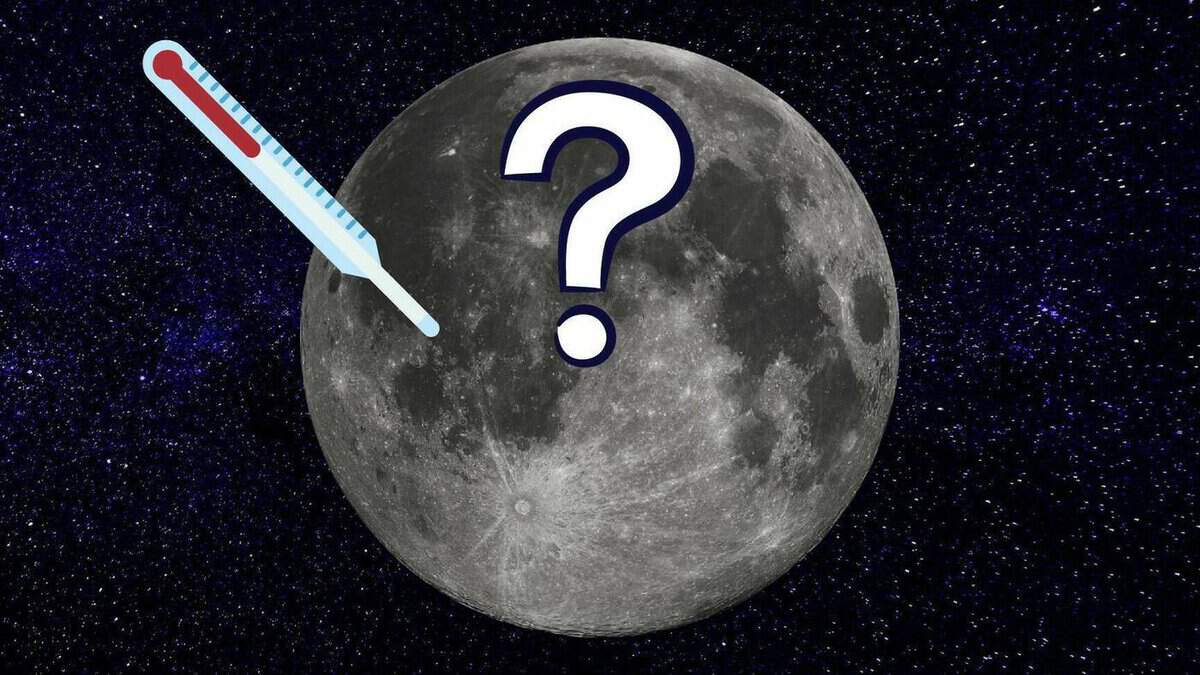The fact that the Moon lacks a traditional atmosphere is both accurate and misleading. While our celestial neighbor does not possess a substantial gas envelope that can shield its surface from incoming meteorites and safeguard potential life from harmful cosmic radiation, it does, however, possess a tenuous and exceedingly sparse gas envelope, which can be classified as an atmosphere.
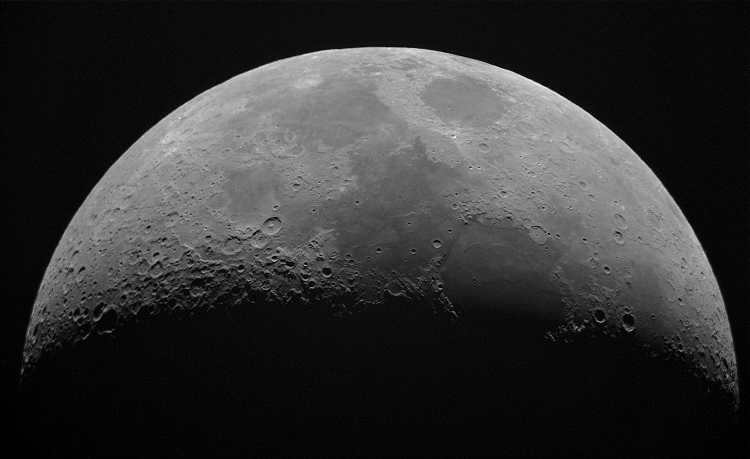
Lunar Atmosphere: A Comparison
When it comes to the atmosphere on the moon, its density is incredibly low, measuring 10 trillion times less than that of Earth. Interestingly, the density of the lunar atmosphere varies depending on the lunar “day”. On the sunlit side of the moon, near the surface, the concentration of gas ions in 1 cm³ is 10 to the 4th degree. However, on the dark side of the moon, this concentration increases to 10 to the 5th degree. In comparison, Earth’s atmosphere has a concentration of 2.7×10 to the 19th degree.
The lunar atmosphere is so sparse that for two gas atoms to collide within it, they would need to travel a distance of more than 10 moon radii during the night and 100 during the day.
The molecules in this gas layer move around the Moon in elliptical orbits like microscopic satellites, as long as they do not exceed the speed of 2.38 km/s to escape into space or slow down to 1.68 km/s to be pulled in by the gravity of a satellite.
Which gases can be found
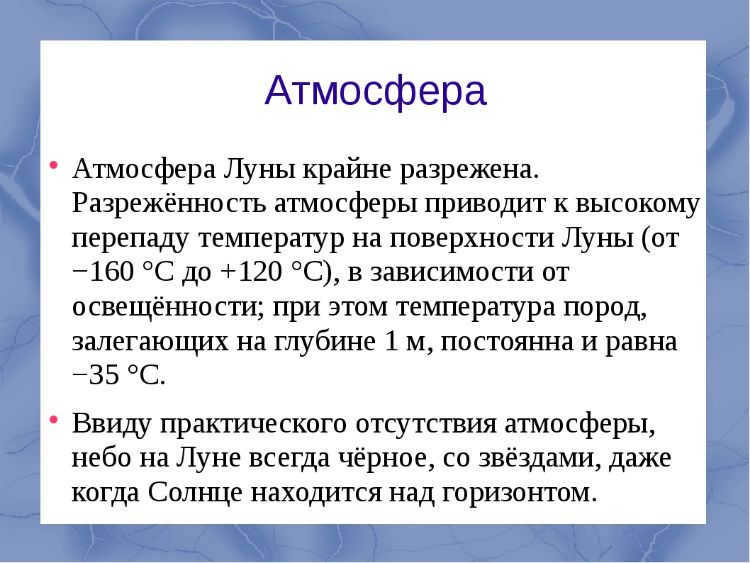
The composition of the Moon’s atmosphere is distinct as it lacks air. Instead, it consists of various elements including:
- Hydrogen molecules
- Helium ions
- Methane ions
- Argon ions
- Neon ions
A sodium tail with a size of approximately 15-20 radii was discovered on the Moon in 1991. This finding led to the conclusion that small amounts of sodium and potassium ions exist in the lunar atmosphere.
The Lunar Prospector Orbiter, an American space station dedicated to lunar geology, has detected traces of radioactive isotopes of radon and polonium near the Moon’s surface. Scientists estimate that the total mass of the Moon’s gas layer is around 25,000 kilograms.
What impact does the thin atmosphere have?

As a result of continuous bombardment by meteorites, numerous craters have formed on the surface of the Moon. This phenomenon is attributed to the absence of an atmosphere, which exposes the Moon to intense cosmic radiation capable of eradicating any form of life on the lunar surface.
Furthermore, the absence of an atmosphere also renders the Moon susceptible to significant fluctuations in temperature. The sunlit side of the Moon can reach temperatures as high as +127ºC, while the unlit side experiences temperatures as low as -173ºC.
In the depths of the lunar volcanoes’ craters, where sunlight never reaches, the temperature drops to almost absolute zero, reaching a frigid -247ºC. These extreme low temperatures have yet to be recorded even on Pluto.
What occurred to the atmosphere of the Moon?
The Moon’s atmosphere has become thin due to its relatively low gravity. This causes most gas molecules to disperse into outer space. However, this hasn’t always been the case.
According to a hypothesis, approximately 3.5 billion years ago, the Moon had its own atmosphere for a duration of 70 million years. The density of this atmosphere was three times higher than the current atmosphere on Mars. During this time, the Moon experienced a peak in volcanic activity, with the eruption of lava releasing a significant amount of gases. These gases not only replaced the molecules that were lost into space but also increased their overall quantity.
The accumulation of lunar dust acted as a unique layer that helped regulate the temperature on the Moon’s surface, preventing overheating during the day and overcooling at night.
The disappearance of this atmosphere can be attributed to the decline in volcanic activity on the Moon. As dust continued to accumulate on the lunar surface, fewer and fewer gases were released into the surrounding space. Eventually, the amount of new gas molecules entering the atmosphere became insufficient to offset the space being absorbed. Consequently, a critical threshold was reached, resulting in the gradual depletion and eventual disappearance of the lunar atmospheric shell.
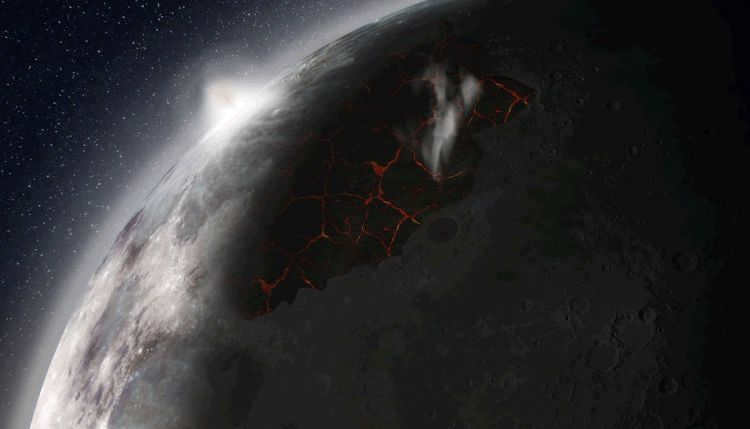
It is theorized by scientists that in the past, the Moon had an abundant number of volcanoes, resulting in a much denser atmosphere than what is currently observed. This phenomenon is depicted in an image by Forbes.
The current atmosphere on the Moon is primarily composed of hydrogen molecules, as well as ions of helium, argon, and methane. This composition is a result of various physical processes, including radioactive decay within the Moon’s interior, exposure to sunlight and cosmic radiation on its surface, and impacts from meteorites.
During the radioactive decay of matter within the Moon, free gases isotopes are released, continuously. As they rise to the surface, they form the foundation of the gas layer, with the Sun also contributing to its creation.
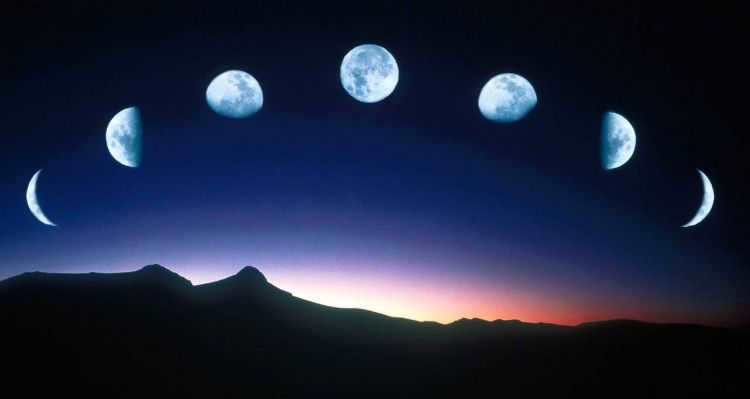
The composition of the Moon’s gas shell varies depending on its position relative to the Sun. During the day, the atmosphere on the Moon’s illuminated side differs from the atmosphere on its dark side. This phenomenon is due to the behavior of hydrogen atoms, which reach speeds exceeding 2.38 km/s during the day and are capable of escaping the Moon’s gravitational pull. On the other hand, during the night, the speed of these molecules decreases significantly, causing them to descend and settle on the lunar surface.
Unlike hydrogen, ions of other gases such as helium, neon, and argon are heavier and therefore cannot achieve the necessary speed to escape the Moon’s gravity. As a result, these ions remain above the Moon’s surface on the day side, while on the night side, they are found on the surface.
Yet another way the gas layer is replenished is through the regular impact of small meteorites on the lunar surface. These meteorites not only raise lunar dust, but also stir up the molecules of gases that lie on top of it.
The Earth and its satellite, the Moon, are equidistant from the Sun, but they possess contrasting surface conditions. The Moon experiences temperature extremes, ranging from scorching hot to freezing cold. These variations are influenced by factors such as the tenuous atmosphere and numerous other parameters. Conversely, the temperature fluctuations of the lunar rocks situated beneath the surface layer are minimal.
Image: Temperature on the Moon. Source: spacegid.com
Temperature of the Moon’s core
The core of Earth’s natural satellite measures 330 kilometers in radius. This particular section of the celestial object consists of approximately 80% iron. The average temperature range of the Moon’s core is between +1327…+1427°C. The core’s high level of radioactivity contributes to the emission of heat, which in turn warms the inner layer of the liquid mantle.
Nevertheless, the radioactivity of the Moon’s core is significantly lower compared to that of Earth. Simultaneously, the heat generated by the core is insufficient to impact the temperature of the Moon’s surface.
The parameters that affect the indicators on the satellite’s surface include:
- The amount of light that is illuminating the celestial body;
- The level of solar activity;
- The angle of inclination;
- The speed at which the body rotates around its axis;
- The characteristics of the atmosphere, and so on.
It is believed that the indicators on the Moon’s surface are minimally influenced by space winds.
The reason behind significant temperature fluctuations
Throughout the day, the temperature on the sunny side experiences extreme highs. Conversely, during the night, the temperature rapidly drops. This phenomenon can be attributed to the unique movement patterns of the moon, which completes one rotation around its axis every 27 days.
The moon’s inclination level is measured at 1.54 degrees. As a result, the satellite does not experience distinct seasons, and its climate remains relatively stable throughout the year. The occurrence of day and night on the moon is dependent on whether the Earth obscures the moon or not, since the moon revolves around our planet.
Furthermore, the temperature indicators on the moon can be influenced by the activity of the sun.
Therefore, the duration of the day and night periods is 13 days and 12 hours each. Furthermore, the poles experience relatively stable low temperatures as they receive minimal sunlight. The sunlight that does reach the poles is reflected, resulting in no warming effect on the surface. The highest temperatures during the day can be found in the equatorial zone.
The low density of the atmosphere is also responsible for the significant temperature fluctuations on the surface. It is believed to contain small amounts of water vapor and carbon dioxide. Additionally, there are other greenhouse gases present in the rarefied atmosphere of the Moon, although their concentration is minimal.
On Earth, the atmosphere acts as a barrier against heat loss and extreme overheating. However, the Moon lacks this protective layer, leading to surface overheating during the day and extreme cooling at night.
Temperature variation
The temperature range on the lunar surface and its fluctuations are monitored using specialized infrared sensors installed on stations orbiting near the Moon. The data collected by these devices are known for their high accuracy.
During the daytime, the average temperature on the Moon’s surface is +127°C. As you move towards the poles, it gradually decreases and reaches a range of +10…-15°C. At night, the temperature drops significantly, reaching as low as -173°C across the entire surface of the celestial body. The coldest temperatures are recorded in the craters located at the poles. The South Pole can experience a temperature drop as low as -238°C, while the craters at the North Pole can reach -247°C.
The stability of the indicators persists at depths exceeding 1 meter. This phenomenon can be attributed to the dense composition of the rocks. Permafrost is present almost everywhere, preventing the rocks from warming up to temperatures above -5°C, even during daylight hours. It is widely believed that heat transfer rates are significantly lower at the poles, as the sun’s rays fail to warm even the surface layer in these regions. It is generally accepted that at the poles, heat transfer rates are considerably lower due to the sun’s rays being unable to warm the surface layer.
Recently, I have been encountering this argument from supporters of the lunar conspiracy: they claim that there is a significant variation in temperature on the Moon, ranging from -170 degrees at night to +130 degrees during the day. They argue that at the time of the Apollo missions, there were no materials capable of withstanding such extreme temperature differences. In order to address this argument, let us consider two questions:
1) What is the duration of a day on the Moon?
2) How long did the Apollo crews stay on the Moon, from landing to takeoff?
Moon surface photo, Apollo 12 (source – https://history.nasa.gov/afj/ap12fj/photos/54-t.html)
So, the length of lunar days is equivalent to the time between one full moon and the next, which is approximately one month. Therefore, one lunar hour is equivalent to 1.25 Earth days. Additionally, it is important to note that the temperature on the Moon does not change immediately. Once the Sun rises over a specific point, that point begins to warm up. It is only in the second half of the lunar day that the temperature begins to cool down (the temperature graph can be viewed here, for instance).
To address the second inquiry, based on information from Wikipedia and NASA, lunar landings typically lasted between 1 to 3 Earth days. When translated into lunar time, this equates to only 1-2 lunar hours! Consequently, the astronauts did not encounter any discernible variation in temperature between the day and night on the Moon. Furthermore, the timing of the missions was carefully chosen so that the lunar landings occurred during the lunar morning, when the landing site was just beginning to be illuminated by the Sun. As mentioned before, during this relatively brief period of time (according to lunar standards), the Moon had not yet warmed up to critical temperatures. It is worth noting that the long shadows cast by the astronauts are a result of the landings taking place in the lunar morning, when the Sun has not yet risen to its zenith.
P.S. Allow me to clarify my stance a little. I am not attempting to convince everyone and everything that the Americans indeed landed on the Moon – after all, I wasn’t present there to witness it firsthand. However, the arguments put forth by “Moon Conspiracy” proponents can often be refuted by historical records, technological advancements, principles of physics, astronomy, and other scientific disciplines. It is not a difficult task to debunk these misconceptions and, in fact, it can be an enjoyable and, I believe, valuable endeavor.
If you found this article interesting, please show your support by liking it, subscribing to the channel, and sharing it on your social media platforms. Your support will encourage me to produce more content, and the dissemination of valuable information will be facilitated!
P. P. S. Typically, when you explain to proponents of the moon conspiracy the flaws in one of their arguments, they quickly come up with a slew of others. It’s impossible to address them all in one article, so I have separate articles dedicated to analyzing these arguments. To avoid repetition in the comments, I will provide links to those articles:
- About the Apollo fail-safes
- About the wrong color of the Moon in NASA photos
- About “lost tapes” with landing footage
- About why they don’t fly for so long
- About the “terrible temperature differences” on the Moon
The Moon completes a full revolution around its axis in 27 Earth days, 7 hours, and 43 minutes. This is the duration of a solar day on the Moon. Consequently, for nearly two weeks, the Moon experiences daylight, followed by a two-week lunar night.
In the equatorial zone, the lunar surface can reach temperatures close to 130 degrees C under the scorching rays of the sun. However, during the midnight hours, the temperature drops drastically to a chilling minus 170 degrees C.

The surface of the Moon experiences significant temperature variations due to the thinness of its atmosphere. During the day, the temperature can reach as high as +127 degrees Celsius, while at night it drops to -173 degrees Celsius.
Curiously, despite these extreme temperature fluctuations, the American flag planted on the Moon during the Apollo missions neither froze nor burned. This raises the question: why did the flag remain intact?
– 2 years ago
Andrew, what can be frozen and what can be burned?
Only liquids can be frozen. The flag, no matter how it is treated, is not a liquid. Something can be burned only in the presence of an oxidizer (for example, in an oxygen atmosphere or in the presence of something similar, like hydrogen peroxide), and there is no oxidizer on the Moon because it is a cosmic vacuum.
One might also wonder why astronauts working in outer space, outside of the station, do not freeze and burn. The conditions are exactly the same. Sun and vacuum. Or shadow and vacuum.
– 2 years ago
Therefore, there is no protection for the Moon against solar heating during the day or cooling during the night. Additionally, the length of solar days on the Moon is 294% longer than on Earth. As a result, significant temperature differences between day and night are anticipated on the Moon’s surface, which are indeed observed. The Moon’s considerable size allows for thorough temperature surveys using both optical and radio methods. Below are the key findings from the infrared and radio frequency measurements of the Moon’s thermal radiation:
1. Infrared measurements have indicated that the surface temperature of the Moon at the point where the Sun is directly overhead is approximately +100 °C. Conversely, at the point where the Sun is opposite to the observer (midnight), the temperature drops to -160 °C. This lower temperature has been verified by measuring the radio waves emitted by the Moon during the new moon phase, using a wavelength of 1.3 mm. By comparing this radio emission with that of the Sun, it has been determined that the temperature of the Moon’s midnight region is 124.5±8.6 K.
The temperature decrease during the full moon towards the lunar edge follows a specific pattern, although a smooth sphere would exhibit a decrease according to a different pattern. Interestingly, there are areas of disturbance where the temperature is higher than in the surrounding regions. Typically, optically darker areas, such as seas, appear hotter than lighter areas. Notably, the bottom of a large lunar crater is usually colder than the surrounding area, although there are exceptions to this (see p. 530).
Figure 214 illustrates the changes in Moon temperature during the lunar eclipses of 1927 and 1939, as measured by radiometric instruments. The two upper curves represent the temperature changes during the eclipses, while the lower curve represents the radiation emitted by the lunar surface during the 1939 eclipse. The temperature at the subsolar point was measured during the 1939 eclipse, while the temperature near the limb was measured during the 1927 eclipse.
2. When there are lunar eclipses, the temperature of different points on the Moon’s surface is affected by the change in sunlight and can even stop for a period of time. This change in temperature is caused by the transfer of heat from within the Moon through heat conduction. If the temperature drops rapidly, it indicates a low thermal conductivity. In Figure 214, it can be observed that the temperature of the point on the Moon directly facing the Sun drops from 370 to 190 K in just an hour when there is no sunlight. However, it quickly recovers when the sunlight returns. The outer region of the Moon cools down to a temperature of 160-150 K. By measuring these changes in temperature, we can determine the thermal inertia of the surface layer of the Moon. This thermal inertia is influenced by the heat transfer coefficient and the bulk heat capacity. The product of these two factors falls within the range of 0.003 to [insert value]. To draw any conclusions about the composition of the rocks on the lunar surface, we need to make assumptions about their density and heat capacity.
3. Unlike optical measurements, radio measurements at centimeter and decimeter wavelengths provide information about temperatures below the surface: the deeper the wavelength, the greater the depth. By measuring the brightness temperature of the Moon, we can determine a constant temperature component as well as a periodically varying term that decreases in amplitude and phase lag as depth increases. These two quantities also depend on the product of [insert equation here]. Additionally, we can estimate the depth from which radiation at wavelength Y effectively originates by making reasonable assumptions about the surface materials.
At a wavelength of cm, we observed a variation in temperature over time during the synodic month in the Kelvin scale: [insert data here].
In the latter scenario, the minimum temperature occurs after the new moon phase, typically within a day. At 9 cm, the average temperatures are 211 and 218 K, respectively. However, at cm, the Moon’s temperature remains relatively stable throughout the different phases, while the average temperature increases up to cm. Based on this data, we can infer that the temperature gradient on the Moon is at least , which is significantly larger than the temperature gradient on Earth. This substantial gradient can be attributed to low thermal conductivity. However, radio observations have not detected any deviations from the expected increase in temperature with depth on the Moon, suggesting that the low thermal conductivity is likely limited to the surface layers of the Moon, which are more than ten meters thick. This low thermal conductivity cannot be solely explained by the powdery structure of the surface (which is only present on the surface), and, in combination with the low density, indicates a porous and spongy structure similar to pumice, a type of solidified lava.
Observations of temperature changes in specific areas of the moon’s surface during lunar eclipses have revealed that numerous craters, even those that are small and inconspicuous, maintain a higher temperature than the surrounding region throughout the entire duration of the eclipse. Notably, the craters Tycho, Copernicus, and Aristarchus, along with their central slopes, exhibit a slower cooling rate and remain approximately 50 K warmer than the adjacent lunar surface. Additionally, the Sea of Tranquility and other lunar seas generally experience a slower cooling rate compared to the mainland areas.
Presumably, in all these instances we are dealing with an increased thermal conductivity of the constituent rocks or a thinner layer of low conductive material with low thermal conductivity, or even with rocks entirely devoid of dust layers. Thermal receivers that were installed on the Moon and faced the rocks exhibited a much slower decline in temperature after sunset compared to receivers that faced the open space.
Presently, the density of the atmosphere on the surface of the Moon is extremely rarefied and comparable to the density of the outermost layers of Earth’s atmosphere. However, was it always this way? In order to find the answer to this question, NASA scientists constructed a computer model of the “newborn” moon and obtained some rather surprising results.
Image source:www.misteriored.com
During the Apollo project, researchers conducted investigations on the lunar atmosphere and made some interesting discoveries. It was found that the lunar atmosphere contains small amounts of helium and argon, and later on, potassium and sodium ions were detected when observing from Earth.
The lunar atmosphere has several sources, both internal and external. Degassing, which is the release of gases like radon and helium from radioactive decay within the lunar crust and mantle, is one of the main sources. Additionally, the bombardment of the lunar surface by micrometeorites and the solar wind also contributes to the lunar atmosphere.
Despite its low gravity, the Moon is incapable of retaining the gases it releases near its surface, causing them to disperse into space. However, NASA experts posit that during its early stages, the Moon had a remarkably dense and unique atmosphere, despite its current rarity.
An image provided by source.wustl.edu depicts the collision between the ancient Earth and Theia, an event that is believed to have led to the formation of the Moon.
In recent years, the prevailing scientific theory suggests that the Moon was created as a result of a collision between the Earth’s early formation and a protoplanetary object called Theia, which was similar in size to Mars. This collision is believed to have occurred approximately 4.5 billion years ago.
According to this hypothesis, the crash occurred with a nearly tangential trajectory, rather than being centered. As a consequence of this “cosmic mishap,” a portion of the Earth’s mantle and most of Theia were expelled into outer space. These debris eventually formed a proto-Luna, which settled into an orbit approximately 60 thousand kilometers from Earth. Additionally, our planet experienced a significant tilt in its axis of rotation and an acceleration in its rotation speed due to this collision. This theory provides an explanation for the presence of iron on the Moon, its mass, and other characteristics of our planet’s satellite.
The collision between Theia and Earth resulted in the formation of the Moon from fragments of Theia that were ejected into orbit. Image source: wikipedia.org
In 2017, the experts at NASA successfully generated a computer simulation of the recently formed Moon, which allowed scientists to observe its appearance in the past. They discovered that the young Moon, due to its close proximity to the still-cooling Earth, was incredibly hot. In fact, its atmosphere consisted predominantly of vapors from various metals such as titanium, calcium, iron, aluminum, and other substances. The temperature of this atmosphere on the side facing the Earth reached a scorching 1700 degrees Celsius. On the other hand, the temperature on the Moon’s far side dropped to around -150 degrees Celsius, resulting in incredibly powerful winds within the atmosphere, reaching speeds of up to 2,000 meters per second. These extreme conditions bear a resemblance to the environments found on recently discovered exoplanets, such as the ruby planet HAT-R-7b.
Changes in the Moon’s orbit over 4.5 billion years. Image source: wikimedia.org
Upon conducting calculations, the researchers arrived at the conclusion that the Moon remained in such a state for a relatively short period of time in cosmic terms, approximately 400,000 years. Furthermore, the first indications of the gradual dissipation of the atmosphere became apparent 100 years after its formation. Scientists suggest that remnants of a metallic atmosphere may be discovered within the depths of immense lunar craters.
The findings of this study and accompanying article have been published in the digital library of Cornell University on the arXiv.org website.
If you found this article intriguing, please show your appreciation and subscribe to the SCIENCEPOP channel. Stay tuned, folks! There’s a wealth of captivating content on the horizon!

We are accustomed to observing the Moon in the evening and night sky. Even with our unaided vision, we can discern craters and mountains on its surface. For centuries, humans have pondered the age of our celestial companion, the presence of an atmosphere, and the possibility of oxygen, water, and life on the Moon.
Thanks to modern scientific advancements, we now have definitive answers to these inquiries.
Important facts you should be aware of
The distance between the Earth and the Moon measures 384,401 kilometers. It shares the same age as our planet and the rest of the solar system, meaning it came into existence around 4.5 billion years ago. Composed of rocks and ice, the Moon holds a significant place in our celestial neighborhood.
Our lunar companion constantly presents us with one face. This phenomenon occurs due to the synchronized rotation period of the Earth and the Moon, which spans 27.3 days. As the Earth casts its shadow, the Moon’s luminous disc waxes and wanes in the sky.
The Moon experiences extreme temperature variations. On the sunlit side, temperatures can reach as high as +130 °C, while the dark side plunges to a chilling -170 °C.
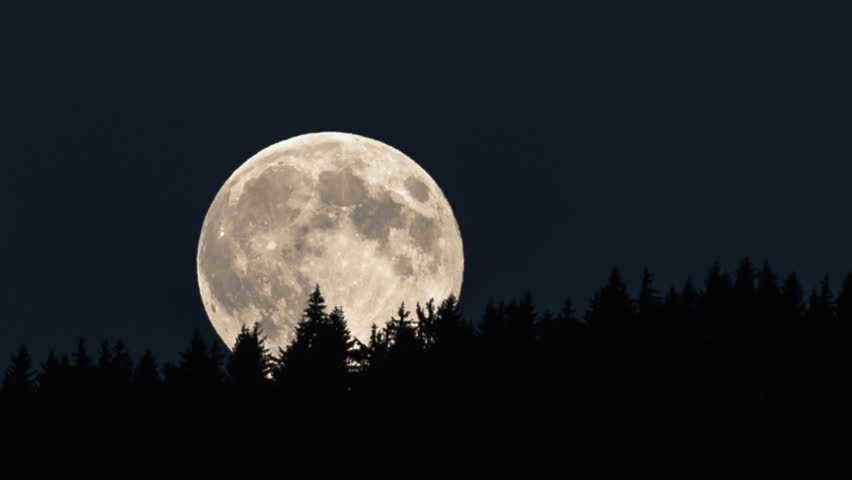
Is there an atmosphere on the Moon?
We are aware that the Earth’s atmosphere is composed of gas and forms a protective layer known as air. This layer is held in place by gravity, which prevents gas molecules from escaping into space.
Due to its relatively weak gravitational pull, the Moon is unable to retain sufficient gases to form a complete atmosphere. However, our celestial neighbor does possess a thin gas shell consisting of helium, hydrogen, neon, and argon.
Nevertheless, the presence of an atmosphere on the Moon holds little significance for us as humans, as we cannot breathe there without the aid of a spacesuit.
On the Moon, there is an absence of sounds and wind. Due to the lack of air particles, the rays of the Sun do not disperse, resulting in a perpetually black sky. Interestingly, even during the daytime, stars are visible in the sky above the illuminated side.
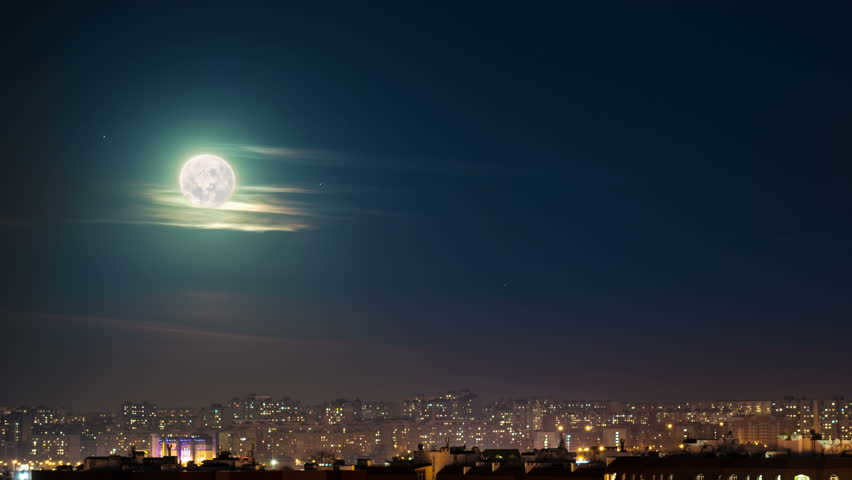
Discovering Oxygen, Water, and Other Fascinating Facts about the Moon
Considering the presence of an atmosphere on the Moon, it begs the question: does water exist there as well?
On this celestial body, water is found in the form of ice. However, given the absence of weather or atmosphere on the Moon, its origin remains a mystery.
Scientists speculate that water on Earth most likely originated from comets, which consist of a mixture of ice and rocks. These comets collided with the Earth’s surface during its early stages of existence. Similarly, the ice on the Moon may have formed through a similar process. Although the majority of the Moon’s water has evaporated over time, there is still water present at the South Pole due to its location in a perpetually shaded area devoid of sunlight.

So, at this point in time we are aware that the Moon possesses a conditional atmosphere, water, and oxygen. However, it is improbable that these resources will be viable for human habitation.
Regrettably, the Moon gradually distances itself from the Earth by a few centimeters each year. Eventually, there will come a time when it surpasses the gravitational pull of the Earth. Consequently, the Moon will drift away from us and continue its journey until it is drawn in by another celestial body with greater mass.
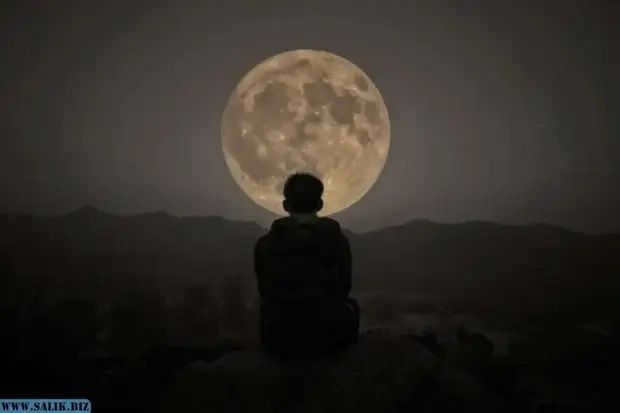
While the Moon may appear to be extensively studied, is it truly comprehended? How can we account for the uncanny synchronicity of the Earth’s and Moon’s rotational speeds, resulting in the Moon constantly showing only one face to the Earth? What is the reason behind the Moon’s defiance of the laws governing light and shadow propagation on curved surfaces?
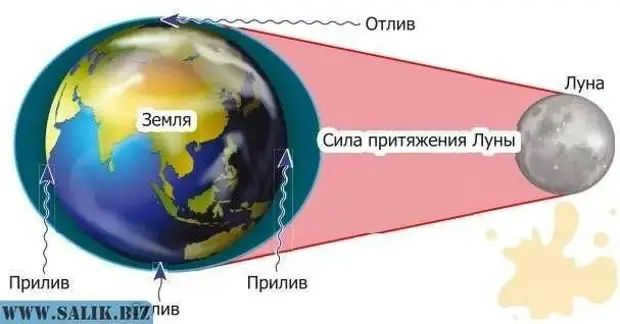
What is the reason that the Moon’s gravitational pull can attract millions of tons of water during high tide, but cannot attract airborne dust? And these are just a few examples; in reality, the subject of the Moon is filled with peculiarities and contradictions. Let us examine some of the most perplexing mysteries surrounding Earth’s satellite.
What is the reason for the scarcity of authentic photographs of the Moon?
Why is it that space companies are unable to provide authentic images of the Moon from Earth’s orbit? Both the U.S. National Space Agency and Roscosmos invest billions of dollars in their research programs, yet the credibility of their outcomes remains questionable. NASA’s website featured a video in July 2015 showing the Moon’s movement around the Earth, captured by a spacecraft. While the video does include footage of the Moon’s far side, there are only two comments. (Link to the video can be found in the comments).
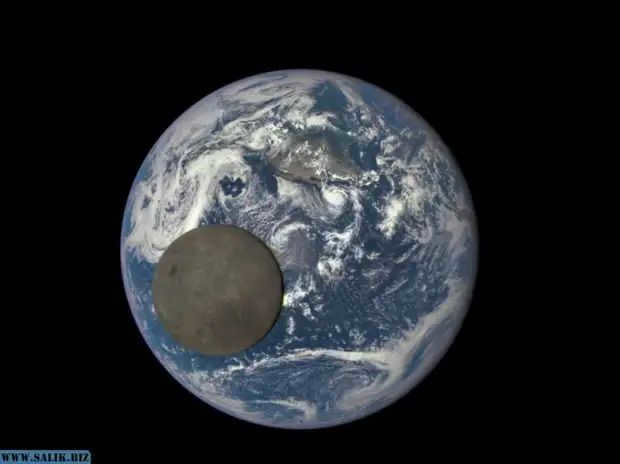
Within this video, the Moon’s revolution around the Earth remains unaltered, with no rotation on its axis. It appears as if a circular object has been inserted and set in motion.
Upon closer examination of the region where the Moon passes over the Earth, with a slight increase in contrast, the translucent nature of the Moon becomes apparent.
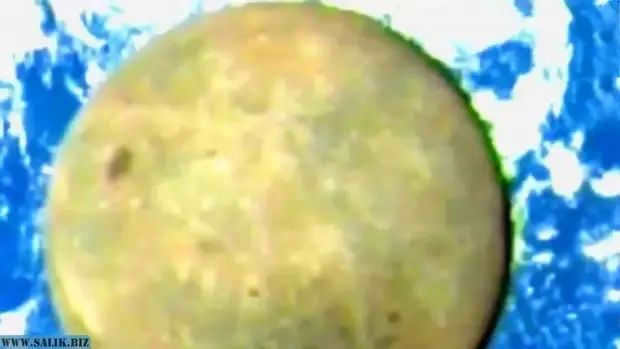
What is the reason behind the Moon’s cold glow?
Scientific experiments have provided evidence that the Moon radiates its own distinct light. However, this light does not produce warmth; instead, it absorbs heat. The surprising discovery of temperature measurements conducted in the shade under moonlight has puzzled researchers.
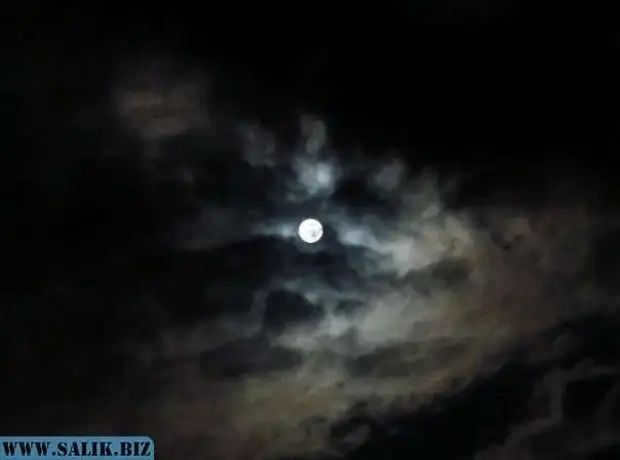

Why does the Moon emit cold light despite receiving light from the Sun?
Temperature fluctuations on the Moon have revealed an interesting phenomenon. In areas illuminated by the Moon, temperatures are consistently lower than in shaded areas. This raises the question: if the Moon reflects sunlight, why does it emit cold light?
What is the reason behind the perfect alignment of the Moon and the Sun?
According to the principles of astronomy, the birth of our solar system dates back approximately 4.6 billion years. The formation of the solar system occurred when a portion of a massive interstellar molecular cloud collapsed under the force of gravity.
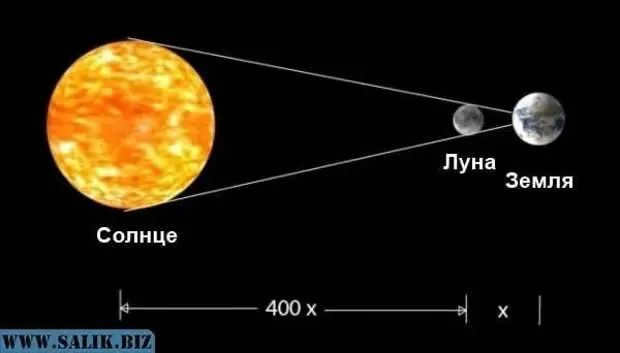
Therefore, is it possible that the Earth and Moon were formed in a state of disorder and uncertainty, but what is the likelihood that the Moon and Sun in the heavens are perfectly aligned by chance, like precious gems?
By observing the cycles of the moon, it becomes apparent that there are instances where the moon is illuminated in a way that suggests the sun is shining from the opposite side. On occasion, the moon is even illuminated from above while the sun is situated below the horizon.

The Moon’s behavior often perplexes scientists. One mystery that still baffles researchers is why the Moon sometimes appears to be illuminated on the right when the Sun is on its left, and vice versa. This strange phenomenon defies the laws of geometry and leaves experts scratching their heads.
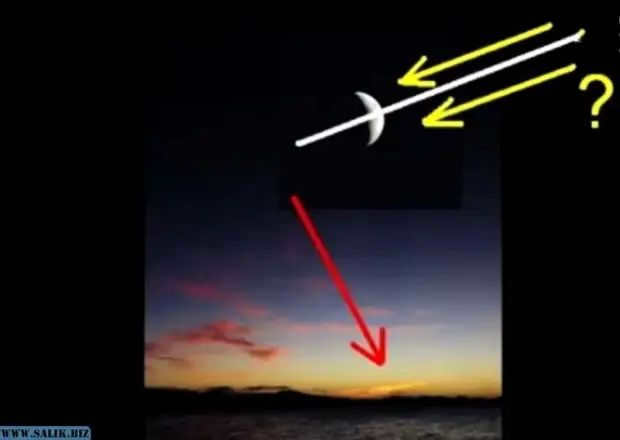
Is it merely a coincidence that the average menstrual cycle aligns so closely with the lunar cycle?
In the perspective of our ancestors, women were often associated with the Moon, while men were associated with the Sun. The combination of these two forces – lunar and solar, celestial and terrestrial – brought about a harmony in natural processes and marked the beginning of new life.
